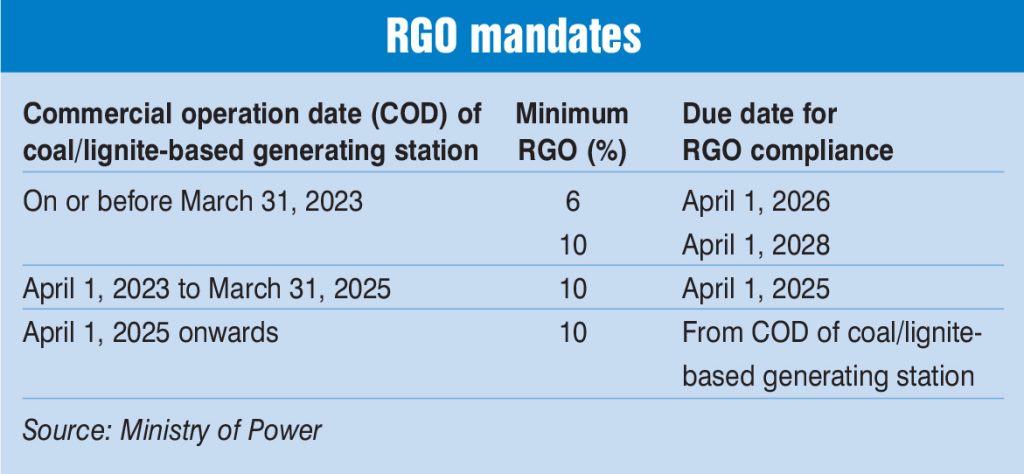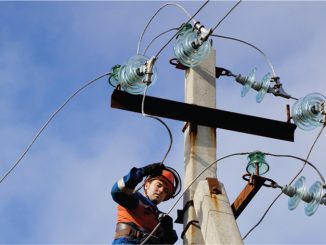The Ministry of Power has issued a draft notification on the renewable generation obligation (RGO), mandating an RGO in the range of 6 per cent to 10 per cent. The notification will supersede the earlier gazette notification of February 27, 2023. The previous notification, in pursuance of Clause 6.4 (5) of the Tariff Policy, 2016 notified under Section 3 (3) of the Electricity Act, 2003, had mandated an RGO of 40 per cent.
 The draft notification states that coal and lignite-based generating stations can effectively reduce fossil fuel consumption by supplying electricity from non-fossil fuel sources. The draft proposes that the central government, in consultation with the Bureau of Energy Efficiency (BEE), will specify the minimum share of renewable energy that designated consumers with established coal/lignite-based generating stations must achieve to reduce fossil fuel consumption.
The draft notification states that coal and lignite-based generating stations can effectively reduce fossil fuel consumption by supplying electricity from non-fossil fuel sources. The draft proposes that the central government, in consultation with the Bureau of Energy Efficiency (BEE), will specify the minimum share of renewable energy that designated consumers with established coal/lignite-based generating stations must achieve to reduce fossil fuel consumption.
As per the draft notification, the assessment methodology states that a designated consumer, such as a coal/lignite-based generating station, must augment its conventional generation with a minimum supply of renewable energy to fulfil its RGO. It has been proposed that such a designated consumer can either establish the required renewable energy generating capacity or procure and supply renewable energy. Additionally, they would have the liberty to supply renewable energy on commercial principles, regardless of the existing PPA for the coal/lignite-based generating station. The draft stipulates that a captive coal/lignite-based generating station would be exempted from the requirement of RGO compliance, subject to its fulfilment of the renewable energy consumption obligation. Furthermore, any generating company with more than one coal/lignite-based generating station would be allowed to comply with the RGO on an aggregate basis.
The draft also includes a provision that any obligation fulfilled by a designated consumer under the “Scheme for flexibility in Generation and Scheduling of Thermal/Hydro Power Stations through bundling with Renewable Energy and Storage Power” (renewable energy bundling scheme) notified on April 12, 2022, as amended from time to time, would be considered a part of the RGO fulfilment.
According to the draft, the RGO will be assessed in terms of the annual share of renewable energy generation, expressed as a percentage of the total annual generation, which includes both conventional and renewable energy generation, by the respective designated consumers with established coal/lignite-based generating stations. Regarding monitoring and verification, the draft states that every designated consumer with an established coal/lignite-based generating station must submit a report, in electronic form, to the concerned designated agency with a copy to BEE, giving the status of electricity generation, including renewable energy generated or procured, for the financial year ending on March 31, on or before June 30 of the following financial year.
The shortfall in the RGO target in terms of TOE (tonnes of oil equivalent) is proposed to be computed as follows:
Shortfall (TOE) = (T – A) × TG) × 86
Where T (%) stands for the target percentage for renewable energy, A (%) represents the achieved share of renewable energy, and TG (MUs) is the total electricity generated from the coal/lignite-based thermal generating station(s) and renewable energy generating station(s), including renewable energy procured and supplied, in MUs.
Any designated consumer with an established coal/lignite-based generating station failing to comply with the stipulated RGO mandatory percentage target, as per the notification, will be subjected to penalty under Section 26 (3) of the Energy Conservation Act, 2001, as amended from time to time.
To conclude, the reduced RGO proposed in the current draft as against the previous notification of February 2023 comes against the backdrop of an unprecedented power demand surge in the country. Coal-fired power plants play a significant role in powering the country during non-solar hours when renewable energy is not available. Night-time or non-solar power demand is also clocking new highs. In the absence of energy storage, coal-fired plants help in meeting electricity demand. Therefore, despite the country’s aggressive renewable energy targets and sustainability goals, the reduction in RGO is a pragmatic move to provide a transition period for renewable energy to catch up. In the interim, the increasing power demand can be met through the thermal power plants that the country has historically relied upon.



